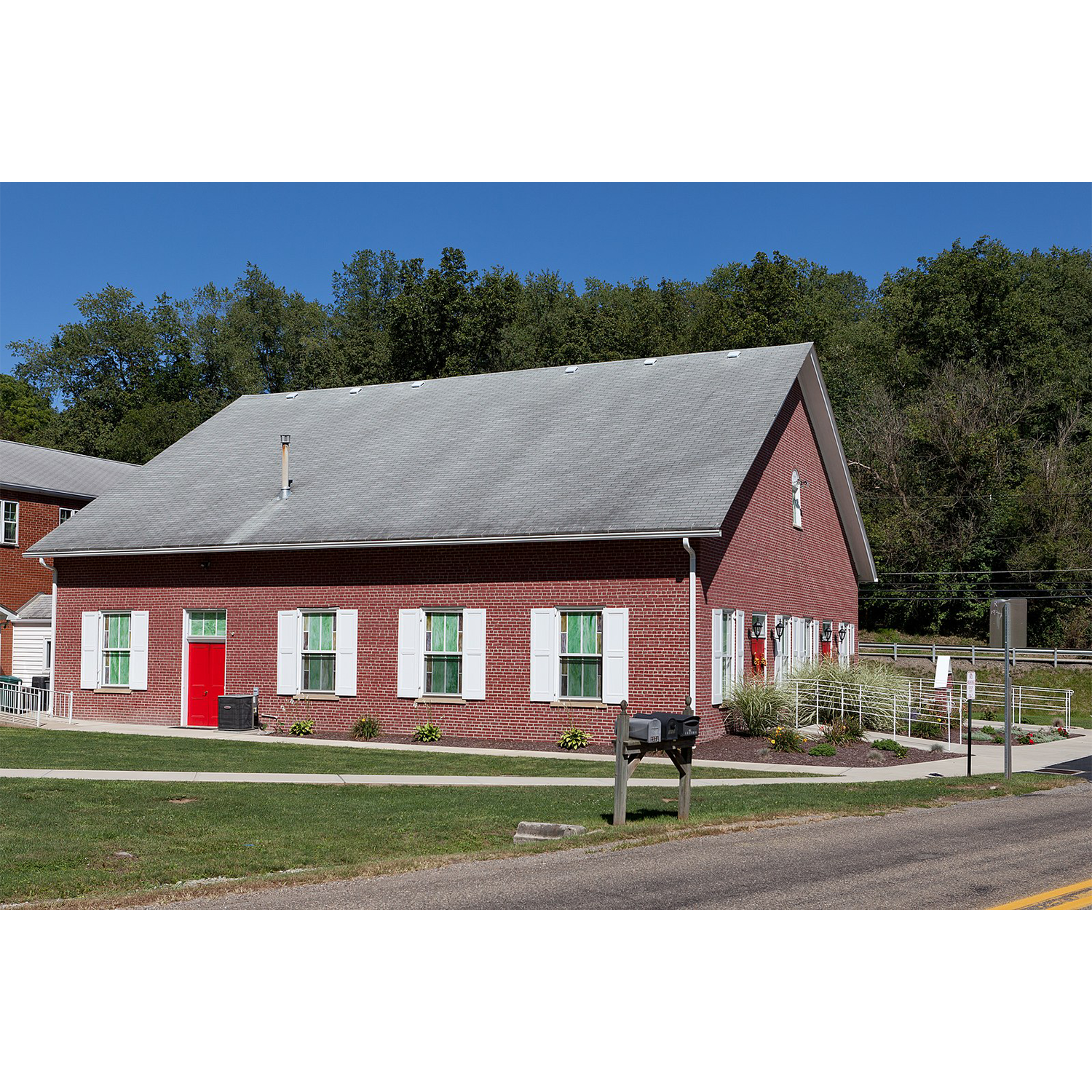Mingo Creek Presbyterian Church and Churchyard
Courtesy of Generic1139
14 September 2013, 14:26:15
Website:
Telephone Number:
Location:
561 Mingo Church Road, Finleyville, PA 15332
Description:
“Meetings for religious services, in the summer time, were generally held in the shady grove. A sentinel was posted to sound an alarm in case of attack by the Indians…” So begins the historical journals of the Mingo Creek Presbyterian Church.
Presbyterians were among the earliest reformed immigrants to America. Tracing its beginning is difficult since there was no Presbyterian colony. But there is no mistaking that when the Scotch-Irish began arriving around 1680, it was here to stay. In 1706, the first Presbytery was established in Philadelphia. As our young country grew westward, a few adventurous souls entered the hills and valleys west of the Alleghenies. In 1769 and the following years, a constant stream of settlers entered that frontier region. A large part of this stream consisted of Scotch-Irish Presbyterians who soon started to form church organizations.
At the junction of Mingo Church Road and Route 88 one mile south of Finleyville, PA stands one of those churches, Mingo Creek Presbyterian Church, one of the most historic churches west of the Alleghenies. In the days when Indians hunted in this area, adventurous settlers counted among their blessings the right to worship God. Around 1782, church records show that the bravest of the Mingo Creek settlers gathered near the present site of Mingo Church, posted sentries, and began the services of Christian worship which have continued there uninterrupted to this day.
(Local resident Charles Kennedy stated in his historical paper in 1925 that records show as early as 1774 that people were gathering at Mingo and holding services, but that date cannot be substantiated.)
The cost of worship was great then. Until 1788 there were no houses of worship in the area. Even in the bitter winter weather the services were held in the open air. A place was selected which partially sheltered the congregation from the weather, where a log pulpit was erected and logs furnished those in attendance a seat. It was not uncommon for families to ride 10-15 miles to a meeting.
Records indicate that these early meetings were held under a mighty oak tree. That tree remained through to 1990, when it succumbed to an attack by carpenter ants. The congregation of Mingo Creek at that time commissioned a carving to be made of the tree stump. The carving depicts and commemorates the circuit riding preachers who braved hostilities and dangers to bring the Gospel of Jesus Christ to the settlers of the frontier. He stands yet today, Bible open before him, a strong witness to the Word that leads to eternal life.
In 1788 the Old Mingo Meeting House was erected on the site of the present-day manse. It was built of logs, and was nearly square, about 50 feet each way. There were extensions on the north and south sides, 5 feet deep and 9 feet in width, one housing the pulpit and the other supplied rough bench seating for the bachelors. Seated in the main body of the building, men sat to one side, women and children to the other.
The men from the Mingo Creek area played a large part in the Whiskey Rebellion. The Mingo Militia met in the Meeting House on July 15, 1794 and left to incite open defiance against the Federal Government, thus setting into motion the events that tested our young republic for the very first time. Many notable Revolutionary War and Whiskey Rebellion figures are buried in the Mingo Cemetery (a separate entity since 1912.)
The church’s first permanent pastor, Dr. Samuel Ralston, was born in Ireland and came to Mingo and Horse Shoe Bend (now Monongahela) in 1796 as a missionary. He led the congregation till 1837, and remained as a member till his death in 1851. His descendants remained active in the Mingo Creek Church through the 1960’s. Rev. Ralston is also buried in the Mingo cemetery, overseeing, yet today, God’s work at Mingo Creek Church.
Many things have changed over the years. The current sanctuary was constructed in 1831. The manse was erected in 1924, followed by the Christian Education Building in 1958.
Unchanged, however, are our belief in the Bible as God’s inspired and living Word, and our faith in our crucified and risen Lord and Savior, Jesus Christ, the only Son of God. Mission and outreach programs in the church can trace their beginnings back at least to 1841, and are still seen today as vital and necessary in following Christ and answering His call to “go and make disciples of all nations.”
Mingo Creek Church traces its deep roots in Presbyterianism back to the original “Old Side” leaning Scotch-Irish believers of the early 18th century. Through the years, Mingo has followed that conservative and revival-centered line of Presbyterianism in America. Incorporated in 1851 as an “Old School” denomination, it has borne many different initials behind its name.
When societal pressures concerning the issues of slavery caused a split in the church as it did in the nation, Mingo became a UPCNA congregation (United Presbyterian Church in North America, 1858-1958.) From 1958-1983 Mingo was a UPCUSA church (United Presbyterian Church in the United States of America.) The split between the northern and southern Presbyterian Churches was resolved in 1983 with the formation of the Presbyterian Church (U.S.A.).
But our society continues to change. And to remain true to our God as we feel He has called us, one more change was necessary. On October 1, 2013 Mingo Creek Presbyterian Church became a member church of ECO, A Covenant Order of Evangelical Presbyterians. We continue to pray for God’s guidance, and ask that His love and His Spirit be poured generously upon us as we strive to be the church He wants us to be.
From church’s website

